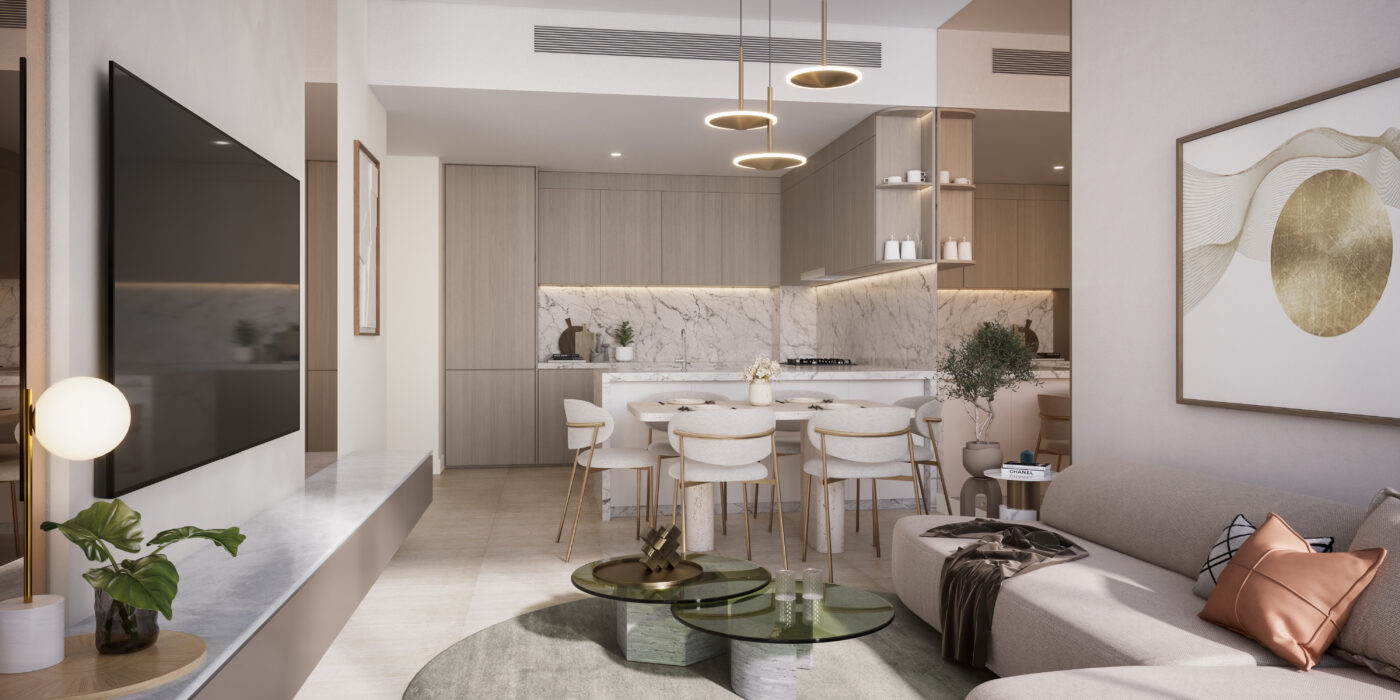In recent years, real estate rendering has become a vital tool in the industry, allowing professionals to showcase properties in a previously impossible way. As technology advances, the future of real estate rendering looks promising. This article will explore the latest Real Estate Rendering Trends shaping the industry.
3D Rendering Trends
Table of Contents
3D rendering has been around for a while, but technological advancements have made it more accessible and affordable. With 3D rendering, architects and designers can create detailed 3D models of buildings and spaces, which can be used for virtual tours, animations, and more.

Artificial intelligence and machine learning are used to create more accurate and realistic 3D renderings, which can be invaluable to real estate professionals. 3D rendering is essential to real estate visualization, allowing real estate professionals to create photorealistic images of properties. One significant trend in 3D rendering is virtual reality (VR) and augmented reality (AR) technology.
VR and AR allow potential buyers to experience a property virtually through a headset or a mobile device, giving them a sense of the space before they visit it in person. Another trend is real-time rendering, which allows real estate professionals to change a property’s design and immediately see the updated photorealistic images. Finally, cloud rendering is becoming more prevalent, with real estate professionals using cloud-based platforms to render large and complex projects quickly and efficiently.
Real Estate Visualization Trends
Real estate visualization is crucial for marketing and selling properties. Future trends include drone photography and videography, interactive 3D models, virtual staging, floor plans, 360-degree virtual tours, and social media. Drones provide aerial footage and photography, while interactive 3D models offer a customized experience.

Virtual staging helps showcase a property’s potential, while floor plans and virtual tours give a comprehensive view. Social media is also a popular tool for reaching potential buyers. As technology improves, we can expect more sophisticated real estate visualization techniques in the industry.
Real Estate Marketing Trends
Marketing is essential to the real estate industry, and rendering plays a significant role in marketing efforts. Real estate marketing is all about showcasing a property in the best possible light, and rendering allows professionals to do just that.
Real estate marketing trends constantly evolve as technology advances, and consumer preferences change. One significant trend is video marketing, with videos showcasing properties, providing virtual tours, and highlighting neighborhood amenities.

Also, the use of chatbots and other forms of automation to streamline communication with potential buyers and sellers is another trend. Social media platforms are also becoming increasingly important for real estate marketing, particularly for reaching younger buyers. Finally, personalized marketing is gaining traction, with real estate professionals using data analytics to create customized marketing campaigns tailored to individual buyers’ needs and preferences.
Property Rendering Trends
Property rendering is essential to real estate marketing, helping professionals showcase properties in the best possible light. Property rendering trends include photorealistic images, with real estate professionals using 3D rendering technology to create images that look almost like photographs. Virtual staging is also a trend used by real estate professionals using 3D rendering technology to create pictures of properties with virtual furniture and accessories, helping potential buyers better envision themselves living in the space.

Photorealistic Rendering Trends
Photorealistic rendering has been around for a while, but technological advancements have made it more accessible and affordable. The photorealistic rendering trend uses artificial intelligence (AI) and machine learning algorithms to create more accurate and realistic images.
Real-time rendering is another trend that allows real estate professionals to change a property’s design and immediately see the updated photorealistic images. Finally, cloud rendering is becoming more prevalent, with real estate professionals using cloud-based platforms to render large and complex projects quickly and efficiently.
Real Estate CGI Trends
Computer-generated imagery (CGI) has been used in the film industry for many years but is also becoming increasingly popular in real estate. With CGI, real estate professionals can create highly detailed and realistic animations of a property.
Real-time rendering is a trend in real estate CGI, allowing real estate professionals to change a property’s design and immediately see the updated photorealistic images.
Real Estate Animation Trends
A real estate animation is a form of real estate visualization that uses animated videos to display properties. A trend in real estate animation is 3D animation, which allows real estate professionals to create highly realistic animations of properties. Another trend is drone footage in animations to showcase properties from a unique perspective.
Property Visualization Trends
Property visualization encompasses a variety of techniques used by real estate experts to exhibit properties. The use of interactive 3D models, allowing potential buyers to explore a property virtually, is a major trend here. Another trend is virtual staging, creating photorealistic images of properties with virtual furniture and accessories. 360-degree virtual tours provide a comprehensive view of a property.

Real Estate Video Marketing Trends
Real estate video marketing effectively lets real estate professionals showcase properties and provide virtual tours. One significant trend is drone footage to capture aerial views of properties and their surroundings—360-degree videos allowing potential buyers to explore a property virtually. Finally, short-form videos on social media platforms are gaining traction as a marketing tool.
Property Marketing Automation Trends
Property marketing automation involves using technology to automate repetitive marketing tasks, freeing real estate professionals to focus on more high-value activities. Chatbots are a prominent trend that can handle customer inquiries and provide personalized recommendations. Another trend is using automated email campaigns to nurture leads and engage potential buyers. Finally, customer relationship management (CRM) software is becoming more sophisticated, with real estate professionals using data analytics to create customized marketing campaigns tailored to individual buyers’ needs and preferences.
Conclusion
Real estate rendering is rapidly evolving, and the future looks promising. As technology advances, we should expect to see even more sophisticated and realistic Real Estate Rendering Trends, which will help real estate professionals showcase properties in the best possible light.
Additionally, we can expect to see more immersive and engaging experiences for potential buyers, including virtual reality and augmented reality experiences. Real estate marketing with more personalized and effective campaigns will become even more sophisticated.
Finally, marketing automation will become more prevalent, allowing real estate professionals to automate many marketing tasks and create more personalized campaigns. The future of real estate rendering is exciting, and we eagerly wait to see what new developments will emerge in the coming years.

